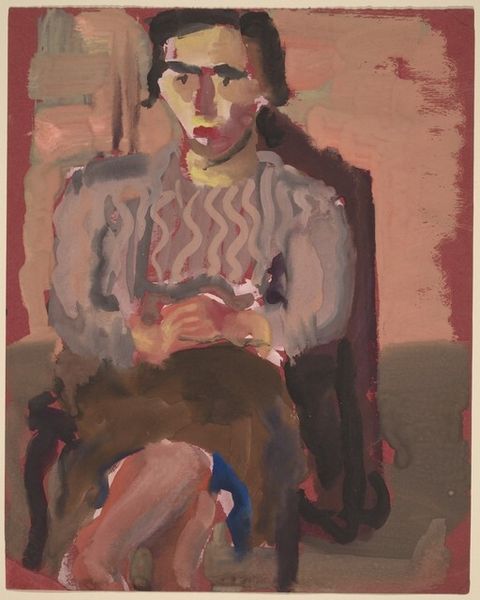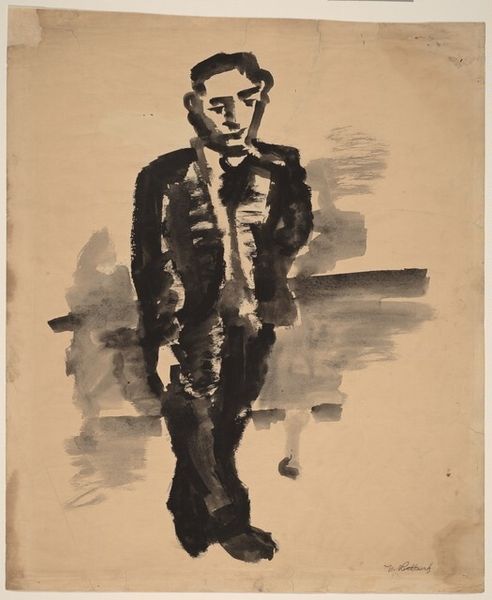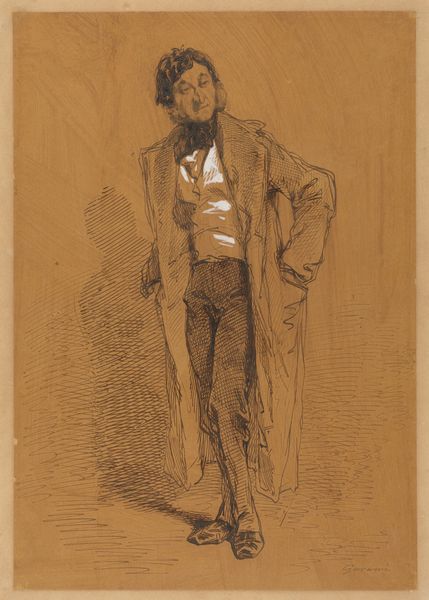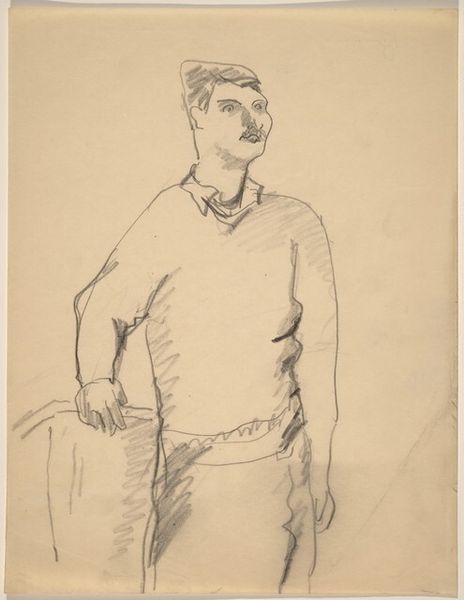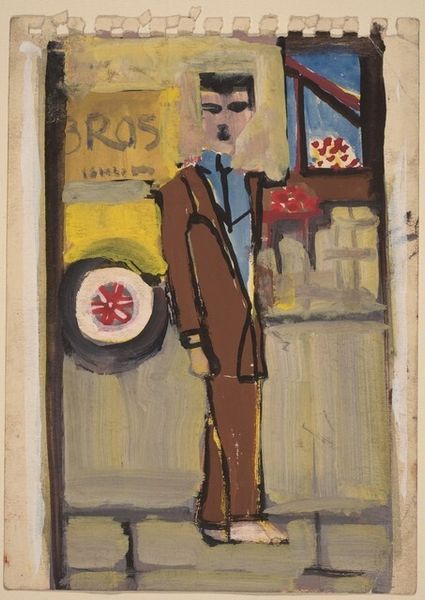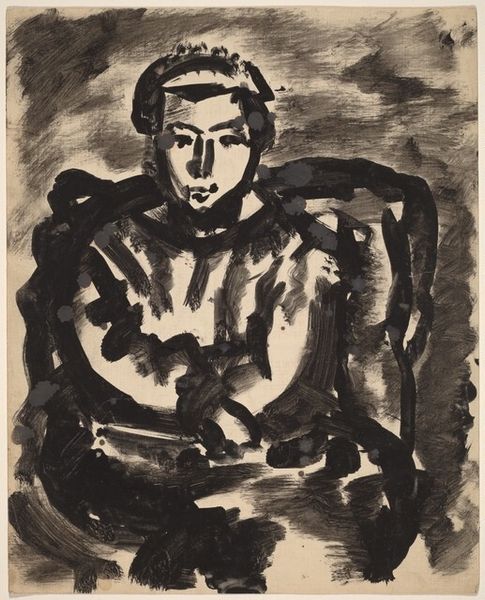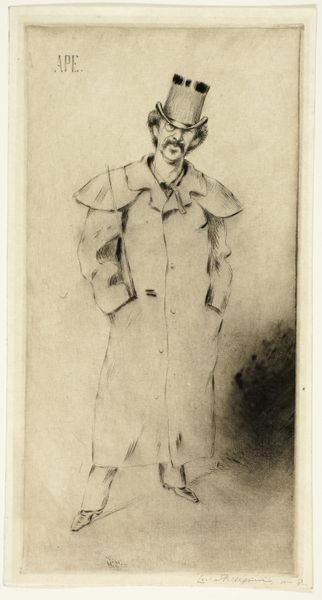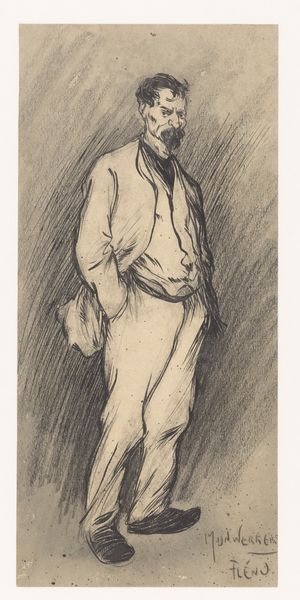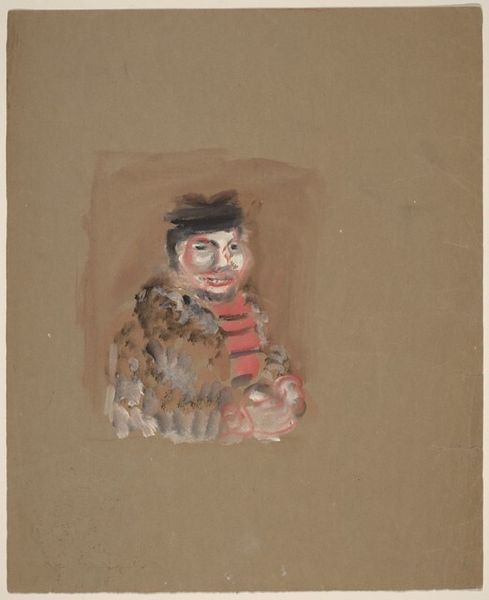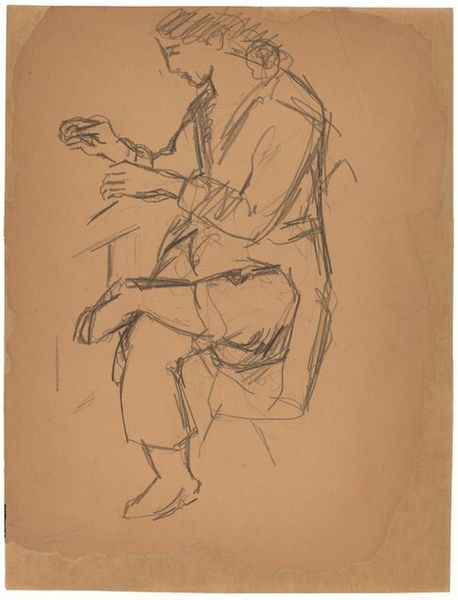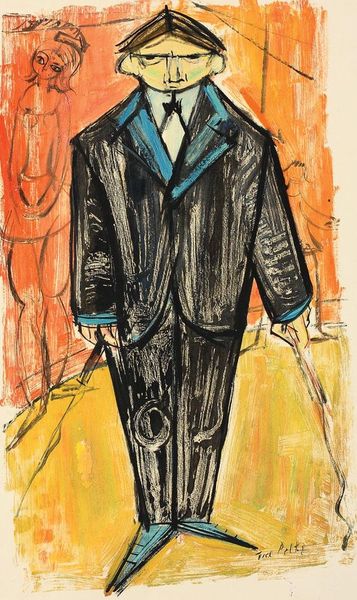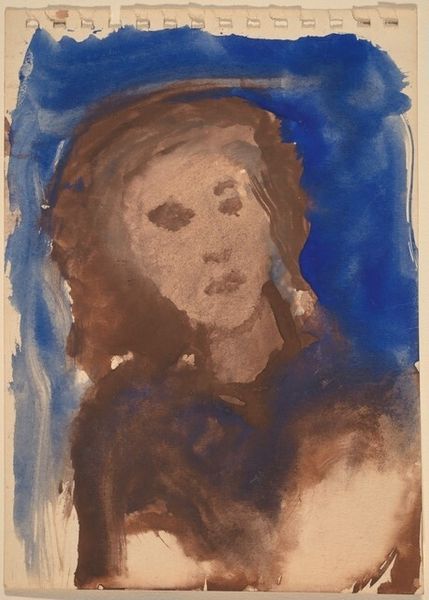![Young Boy Standing [recto] by Mark Rothko](/_next/image?url=https%3A%2F%2Fd2w8kbdekdi1gv.cloudfront.net%2FeyJidWNrZXQiOiAiYXJ0ZXJhLWltYWdlcy1idWNrZXQiLCAia2V5IjogImFydHdvcmtzL2Y0NWJhMmUyLWE1N2YtNDIyMS04N2I0LTRlYTliNzQ0OGNmNS9mNDViYTJlMi1hNTdmLTQyMjEtODdiNC00ZWE5Yjc0NDhjZjVfZnVsbC5qcGciLCAiZWRpdHMiOiB7InJlc2l6ZSI6IHsid2lkdGgiOiAxOTIwLCAiaGVpZ2h0IjogMTkyMCwgImZpdCI6ICJpbnNpZGUifX19&w=1080&q=75)
drawing, painting, watercolor
#
portrait
#
drawing
#
painting
#
figuration
#
oil painting
#
watercolor
#
watercolour illustration
#
portrait art
Copyright: National Gallery of Art: CC0 1.0
Curator: This is an untitled watercolor and oil painting attributed to Mark Rothko, simply called "Young Boy Standing [recto]". Editor: Immediately, I am struck by the palpable melancholy and vulnerability that emanates from the young subject. The colours are muted, almost as if the artist intended to capture the transience of childhood itself. Curator: Indeed, observe how Rothko employs a restricted palette – browns, blues, and ochres. This controlled colour scheme focuses our attention on the structure and form of the figure. Notice too how he utilizes visible, expressive brushstrokes. It is not blended or seamless; the materiality asserts itself. Editor: To me, this colour scheme reflects an established, perhaps nostalgic iconography associated with boyhood and innocence. The boy's slightly awkward stance and gaze evoke familiar symbols: vulnerability, and perhaps a kind of waiting. His socks particularly conjure ideas about his role, or the expectations of boyhood in the mid-twentieth century. Curator: Semiotically speaking, the brushstrokes around the subject lack sharp, definite boundaries which work to separate figure from background. This diffusion denies the boy any claim to permanence or concrete existence within the pictorial field. Editor: Considering Rothko’s interest in mythology and universal human experiences, might this image speak to a broader symbolism beyond the individual? Could this depiction of a child also represent the concept of innocence confronting the weight of adult expectations, a sort of initiation symbol? Curator: Such interpretations can be plausible. However, the aesthetic value rests substantially upon the tension created by Rothko’s calculated application of pigment and structural balances, not solely any symbolism one might extrapolate. Editor: I can see how you feel that way! But, as you noted, Rothko seems intent on questioning the figure’s ‘concrete existence’. Isn’t that, perhaps, an intention linked inextricably with how and what the figure has come to symbolize across history? Curator: A fitting end-point to the discussion of its complexities and its tensions. Editor: A small painting, yet it provokes many lines of enquiry, wouldn’t you say?
Comments
No comments
Be the first to comment and join the conversation on the ultimate creative platform.
